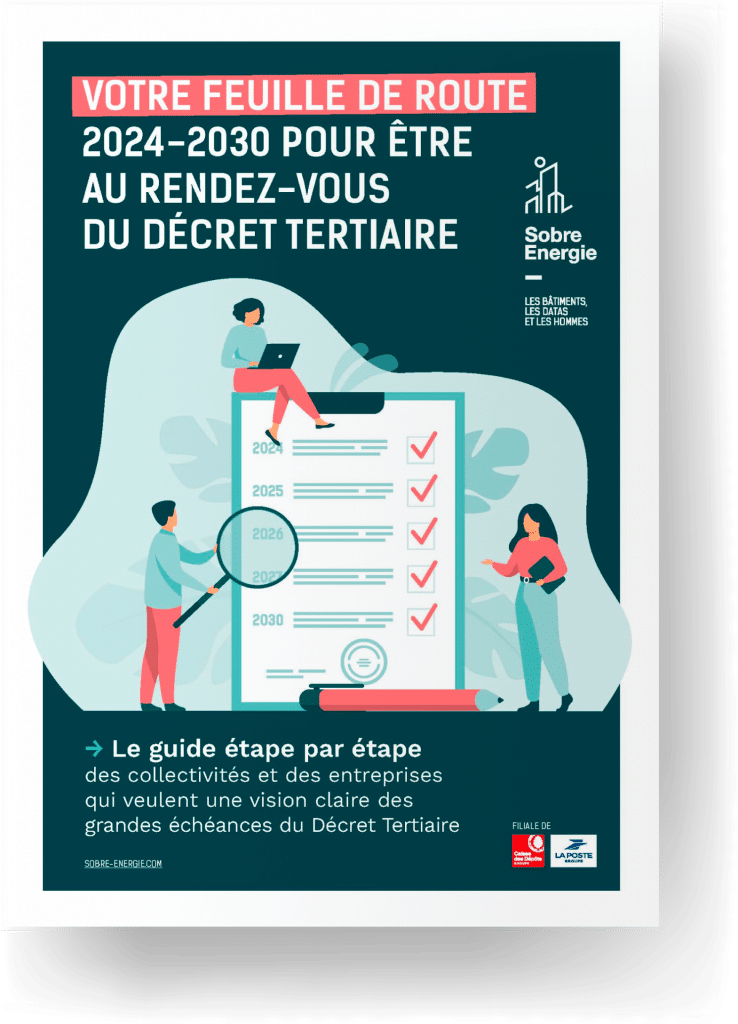Tertiary Eco Energy System, RE 2020, European taxonomy, regulatory pressure is increasing in 2022. And with it, the green value of a property.
From now on, energy performance, regulatory compliance and climate resilience will make the difference between two comparable properties in terms of location or standing.
To maximize the value of a building, here are 4 risks to anticipate.
1 Decline in rental liquidity
With the Tertiary Eco Energy System (DEET), the first deadline of which takes place on 09/30/2022, rent & rental liquidity become the cornerstone of the value of the property.
Every year, a tertiary eco-energy certificate will be issued to each taxable person to reflect progress towards its objective of reducing energy consumption.
This note will include on the front the result of the functional entity and on the back the aggregation of the results on the scale of the entire building, with the results of each functional entity matched with its surface area. Thus, according to the Ministry of Ecological Transition, if a functional entity is noted with an orange sheet, for example, it will seal the building.
But seeing that the others got a green leaf, it will prove that the building is performing well and that it is an operational problem.
What consequences?
This is a very strong element of the future lessor/lessee relationship, according to Marc Lereau, project manager “Energy management and thermal regulation of existing buildings” at the Ministry of Ecological Transition. “On the one hand, the lessee may wonder whether he is renting in a poorly operated building. On the other hand, a lessor will be able to check whether the lessee operated his previous entity well and provide an additional rent if this is not the case in the new lease. »
In the medium term therefore, not respecting the trajectory of reducing consumption, a guarantee of a poor rating, will make the rental of a property more difficult for an owner or an asset manager.
Find out more about the fundamentals of the tertiary eco-energy system
2 Discount on the sale price
This tertiary eco-energy note will be attached to the sales document. In the long term, if the building is poorly rated because it is not energy efficient, its sale price could be negatively impacted.
It is now that we must begin our trajectory of reducing consumption, planned by the Tertiary Decree: -40% by 2030, up to -60% by 2050. Which represents a substantial and constant effort: 3% reduction in consumption each year according to the Sustainable Real Estate Observatory (OID).
Are you ready for the 1st deadline of the Tertiary Decree?
The 5 preconceived ideas to know with our decryption
3 The cost of inaction
Global warming increases the frequency of natural disasters, as recent months have once again reminded us:
- Mega fires in Canada,
- Floods in Belgium or Germany
35% of listed real estate investment companies are already exposed to climate risks (source Four twenty seven)
And the cost for insurers is increasingly high: $250 billion is the amount of losses caused by natural disasters in 2021 (source Le Monde)
Faced with climatic hazards, buildings are on the front line, for two reasons:
- Their fixed location
- Their long lifespan, for offices the renewal rate of buildings is only 1% per year
Anticipating these risks and additional costs by focusing on the resilience of buildings is therefore necessary. This will give a competitive advantage to certain buildings: for example an office building equipped to weather a heatwave, while IPCC scientists predict up to 8-10 weeks of heatwaves per year in France in the future.
What will the building of tomorrow look like in 2050?
4 Exclusion by investors
Finally, the new European taxonomy which classifies activities as sustainable or not will influence the green value of a good.
A building will be defined as sustainable if it dates from before 2021 and is in compliance with the BACS decree, and presents:
- A Energy Performance Diagnosis (DPE) , expressed in primary energy .
- Or failing that, is part of the 15% of the national or regional real estate stock with the best performance primary energy consumption .
The risk is then that an asset incapable of meeting these sustainability criteria will be excluded in the future by investors in their portfolios of products labeled Socially Responsible Investment (SRI).
🤖 Summarize this article with an AI
Click on a button to automatically sum up this page with the AI of your choice.
